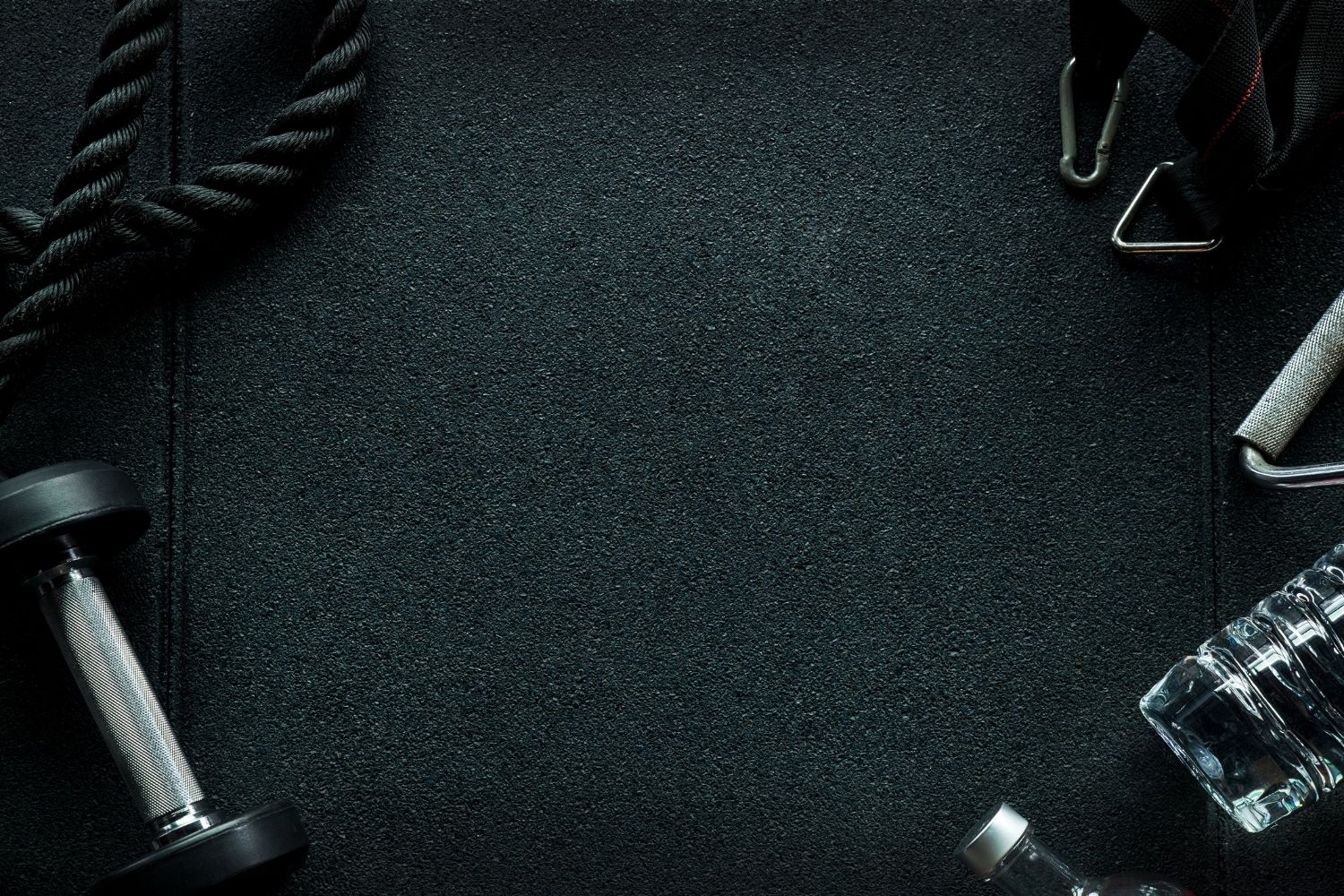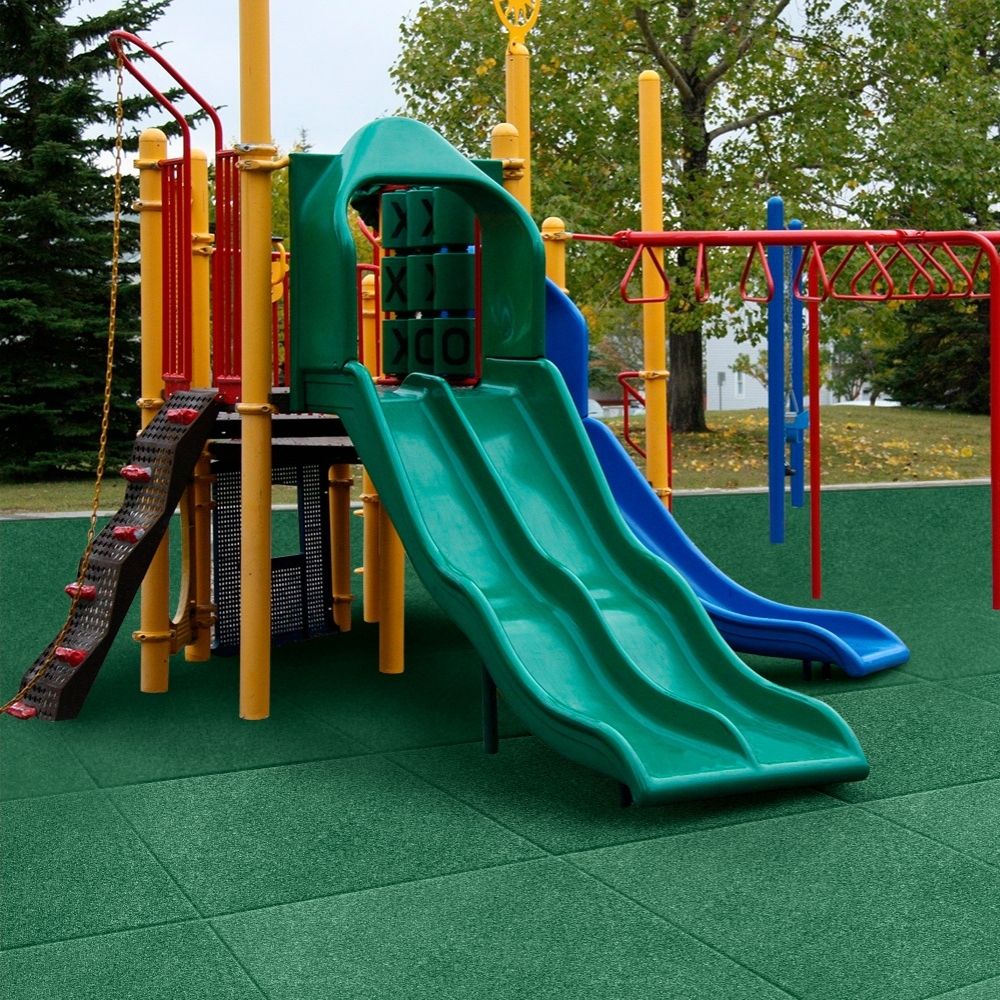
The Ultimate Guide to What Thickness You Need for Your Rubber Gym Flooring
Whether you’re building a commercial gym or trying to optimize your home workouts, here’s everything you need to know about the optimal thickness of rubber floor tiles and mats (Short answer: it depends on your preferred workout activities!)
How thick should rubber gym floor mats and tiles be?
If you’re trying to create the perfect environment for exercise - whether for a professional or a home gym – you will undoubtedly encounter the question of flooring options.
Rubber flooring continues to remain the most popular choice for gym floors as it has many benefits:
- Protect your floor from damage from heavy equipment and dropped weights
- Get extra traction so you don’t slip
- Absorb shock for high impact training
- Provide padding between the floor and the body and help cushion joints
- Help reduce noise and vibrations
- Quick to clean and maintain
- Easy to install
If you’ve decided that rubber flooring is the preferred choice for your gym, the next question is how thick that rubber flooring should be. It turns out, there is no one size fits all answer, as the proper thickness for rubber gym floors depends on the workout equipment and activities you plan to have and do in your gym.
In this ultimate guide, we explore the wide range of possible rubber flooring options and which work best in specific scenarios, so you know exactly how thick your rubber gym floor tiles or mats should be:
What is the best thickness for gym flooring at home?- 8mm is regarded today as the best thickness for home gym flooring generally. However, the kind of rubber flooring you want for your home gym depends on your exercise routine.
- Interestingly, it used to be the case that 3/8-inch rubber was the standard thickness used for most home and commercial gyms. Today, the standard is shifting toward 8mm as it is somewhat lighter and thus a more economical choice.
- If you’ll be lifting weights between 50 -75 lbs or creating a home studio to practice yoga, cheerleading, or dancing, rubber flooring that’s 3/8in or 8mm is an ideal choice.
For example, you might want to check out Genaflex Lite Tile, rubber surfacing tiles with an interlocking design for quick and easy installation (no glue required). Made of premium grade, dent-proof recycled rubber, it’s designed to absorb impact and minimize floor damage while providing cushioning for a wide range of exercises.
If you’re a serious athlete looking to transform your home into a world-class gym with heavy exercise equipment that can support the execution of Olympic-level lifts, then you need a fortified rubber tile such as the 1-inch thick Genaflex Max Vulcanized Rubber Floor Tile. You’ll be able to train harder at home than you ever have before, achieving a clean, light, polished look for your home gym without sacrificing performance or quality.
What is the best thickness for gym flooring used for plyometrics training?- Gym flooring for plyometrics ranges between 6mm and 1 inch thick. However, 6mm is best as an underlayment beneath other gym flooring. You want at least ½ inch thickness for a stand-alone rubber mat or rubber tile.
- Plyometric training is key for athletes who need to develop strength and power for jumping and explosive movements for sports like volleyball and basketball. With the right kind of rubber flooring, your body will be able to recover faster from intense circuits, so you can maximize your workout goals.
For plyometric training, you need high-impact, high-density rubber flooring that will absorb impact from your vigorous routine and provide underfoot relief and comfort. For example, you might be interested in Genaflex Pro, a 1-inch thick laminated rubber floor tile that is engineered for superior impact absorption and resilience, providing a stable surface for the most intense workouts.
What is the best thickness for gym flooring used for weight training?- 8mm is today the most common thickness for commercial gym and home gym flooring. However, if you will be lifting heavy weight (Olympic Lifting / Cross Fit), you want at least ½ inch or more for safety.
- 1/4-inch thick mats are generally only appropriate for fitness routines where there’s no concern about impact from dropped weights. You could use this small-size thickness for selectorized strength machines or under utility benches where only light weights are used, but if you need to protect tile or wooden floors underneath, it’s recommended to choose a thicker mat.
- The next size up is a 3/8-inch mat, which can be used under certain cardio and strength equipment, particularly if you’re using lighter weights, barbells, dumbbells, and kettlebells.
- However, if you plan to use heavy iron and the equipment needed for Olympic barbell lifts or deadlifts, it is better to choose thicker flooring, typically 1/2-inch to 1-inch. The heavier thickness is appropriate to use under bench presses, power cages, squat racks, and utility benches.
If you’d like for a commercial quality, multi-purpose, recycled rubber flooring option that accommodates weight lifting and is designed to reduce impact, vibration and noise from your training sessions, consider the Genaflex Rubber Surfacing Roll.
What is the best thickness for gym flooring used for barbell / dumbbell areas?- Minimum 1/2-inch thick is recommended for weight lifting heavy barbells, dumbbells, and kettlebells to provide safety.
- This is the best choice when you want to truly invest in your future as a lifter. Even if you’re just deadlifting 150lb now, if you goal is to get to 500 lbs., a thicker mat can be worth growing into, as you won’t have to upgrade at a later date.
In the past 3/4-inch mats were generally designed for horse stalls, where they needed to accommodate steel horseshoes on a 1,000lb.+ horse. These mats were known for being chalky, dirty, and smelly. Thankfully, there is now a modern, high-quality version that still won’t break the bank.
If you’re looking for a durable rubber surface that will protect your floor and ensure stability from barbell drops from overhead, you might want to use Genaflex Lock Laminated Rubber Floor Tiles.
What is the best thickness for gym flooring used for martial arts or wrestling?- 8mm is standard rubber gym flooring for many martial arts; however, for wrestling and martial arts that involve grappling and groundwork, choose a thicker mat (closer to 1.5 inches) to be safe.
- If your gym training consists of spinning, kicking, and jumping, as is the case for many martial arts forms, you want slip-resistant gym flooring around 8 mm in thickness that provides a stable workout surface, for example Genaflex Lite Tile made from recycled rubber.
- However, if you’ll be doing throwing, grappling or other groundwork, as is typically found in wrestling, jiujitsu, and other martial arts that emphasize this type of sparring, then you’ll want thicker gym flooring, generally closer to 1.5-inches. At this thickness, you’ll be better protected against head injuries and other physical risks from falls and throws.
- 8mm rubber flooring is considered the bare minimum for CrossFit, but you probably want flooring between ½ -1 inch for more intense workouts.
- If you’re building a CrossFit box or setting up a space in your home for CrossFit training, you need to be able to handle everything from plyometrics to mobility exercises to Olympic lifts (with the understanding that you will probably drop many heavy weights over the course of training).
For best results, you probably want at least 1/2-inch rubber flooring if not thicker for CrossFit training, as it provides the best protection for your subfloor. For exceptional, heavy-duty durability, check out Genaflex Max, engineered with over 100 pyramid-shaped stabilizers to balance impact load from the most intense CrossFit workouts.
When should you use rolls for gym flooring?- Rubber flooring rolls offer versatility, as they can quickly cover large ground spaces and can be cut to best fit your particular dimensions. It’s common to see rubber rolls used for commercial gyms, CrossFit boxes, garage gyms, and even home gyms. They also make a great choice for outdoors, as they’re durable and slip resistant when wet.
- They’re also definitely much more comfortable underfoot than concrete and will stay cooler in direct sunlight, so they’re perfect for outdoor workout areas, play areas, decks, patios, and walkways.
- Puzzle / interlocking rubber tiles are a good choice when you want an easy to install, DIY gym floor for a space isn’t that isn’t extra-large (in which case, it’s generally better to use rubber gym flooring rolls).
- Rubber tiles that come in a puzzle / interlocking design are frequently seen in home gyms, portable gyms, playgrounds, and small fitness studios. Just make sure you get the appropriate thickness for you preferred activities!
When purchasing rubber lock tiles and mats for their gyms, too many buyers are often tempted to just pick the “cheapest” option – but if you don’t choose the kind of flooring appropriate for your workouts, it could result in ruined floors not to mention painful permanent injuries. Avoid the costs by investing in the right kind of rubber flooring for your needs from the very start.
To learn more about rubber flooring options that will be best for your situation and needs, reach out to our friendly, expert staff at Rubber Surface. Just give us a call at 888-285-1585.
Related Article: What are the Different Types of Home Gyms and What Flooring Is Right For You












